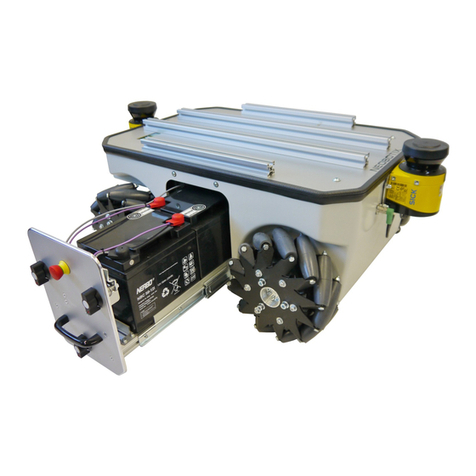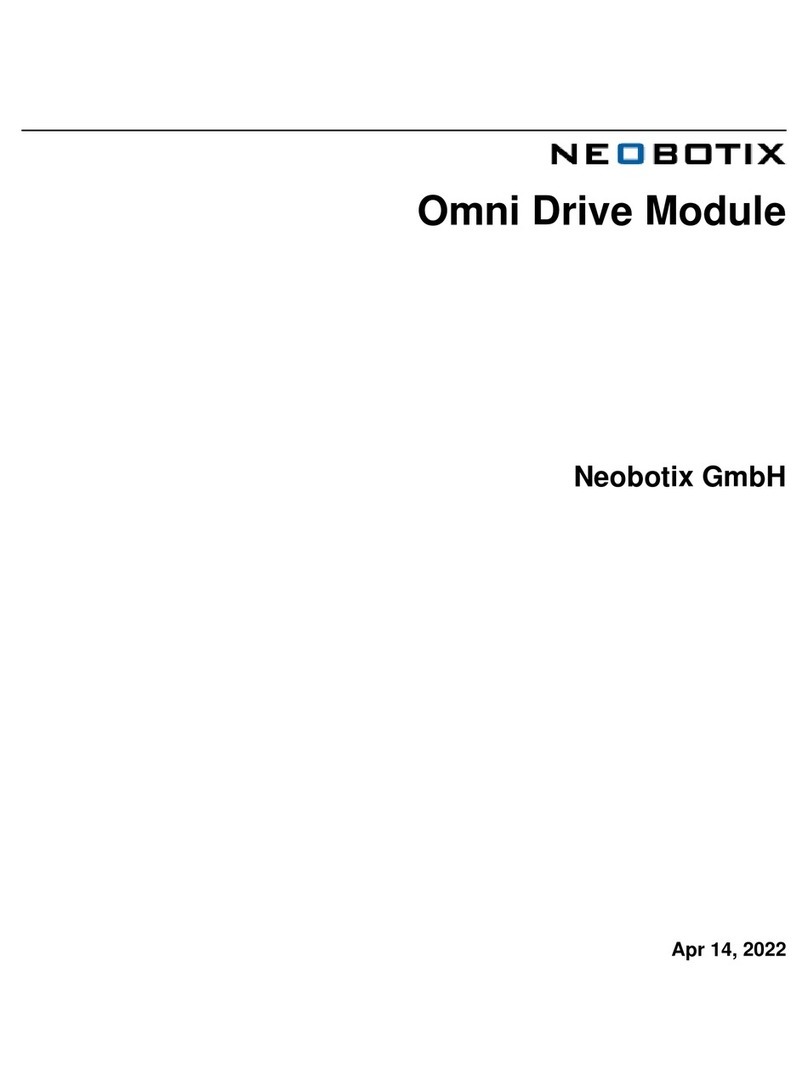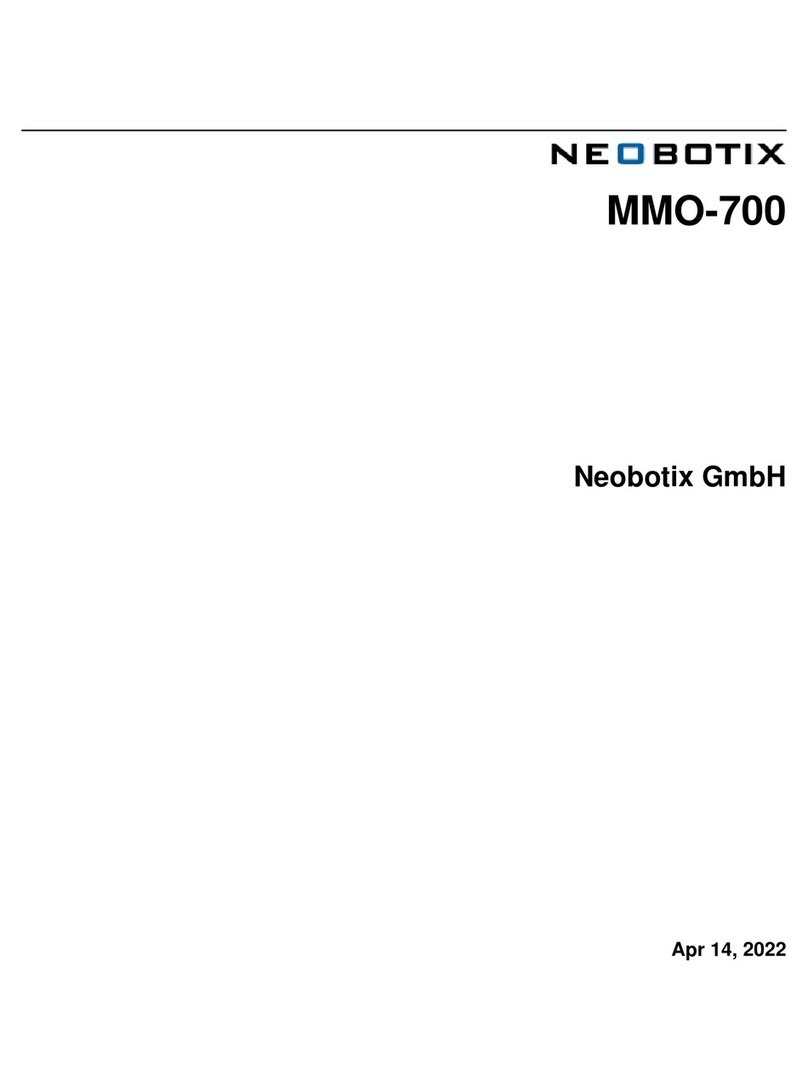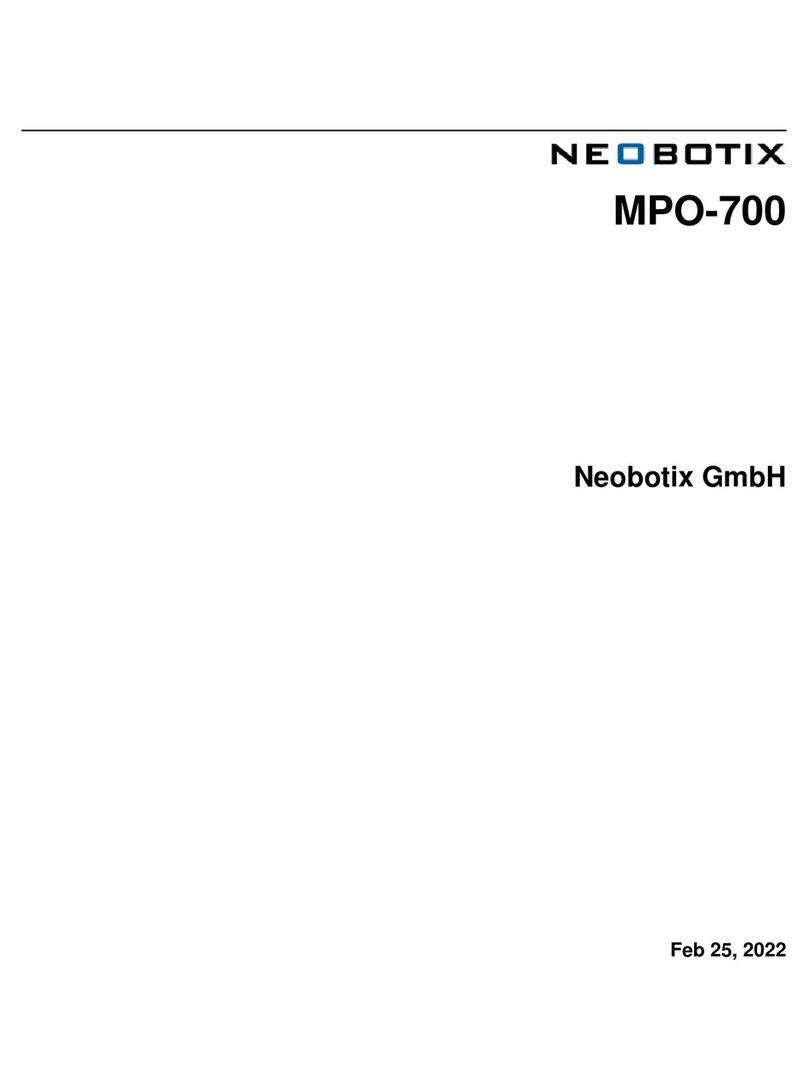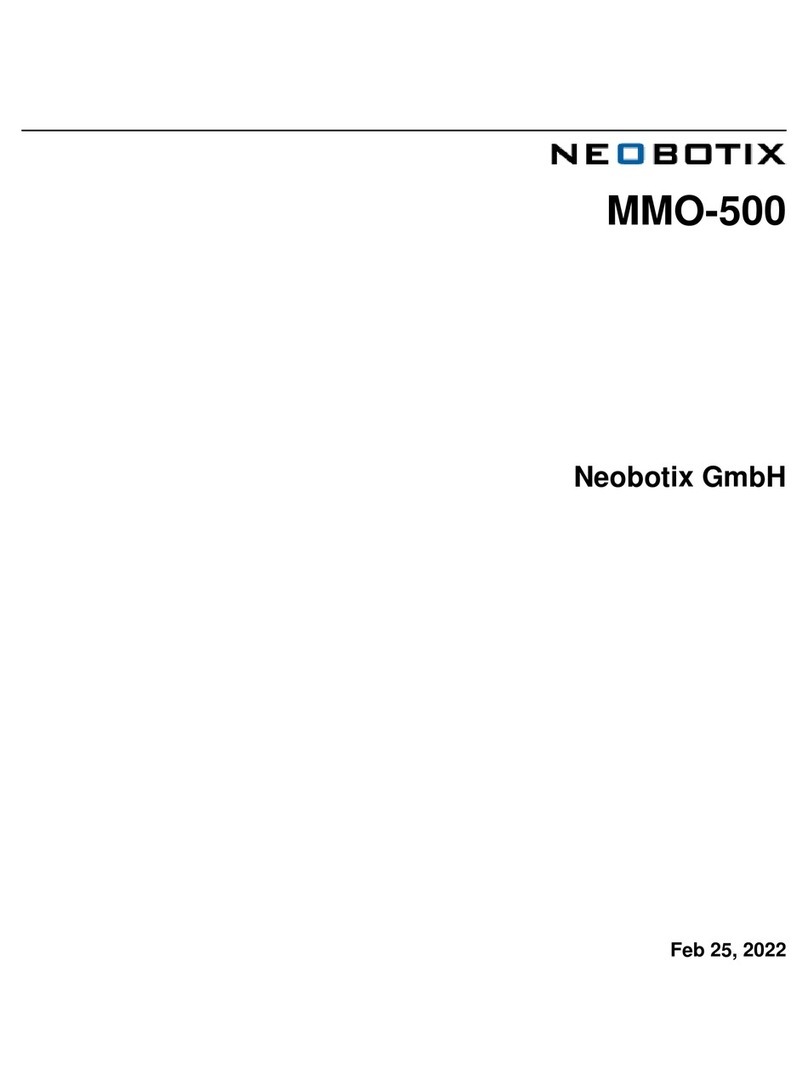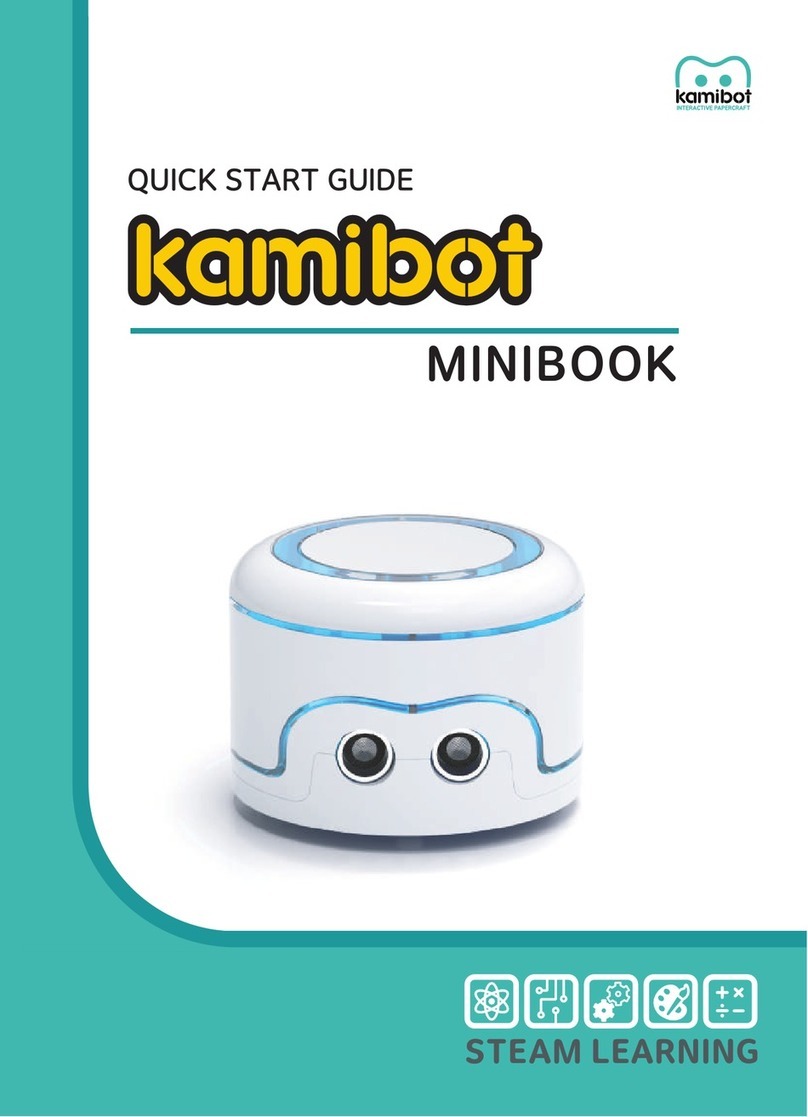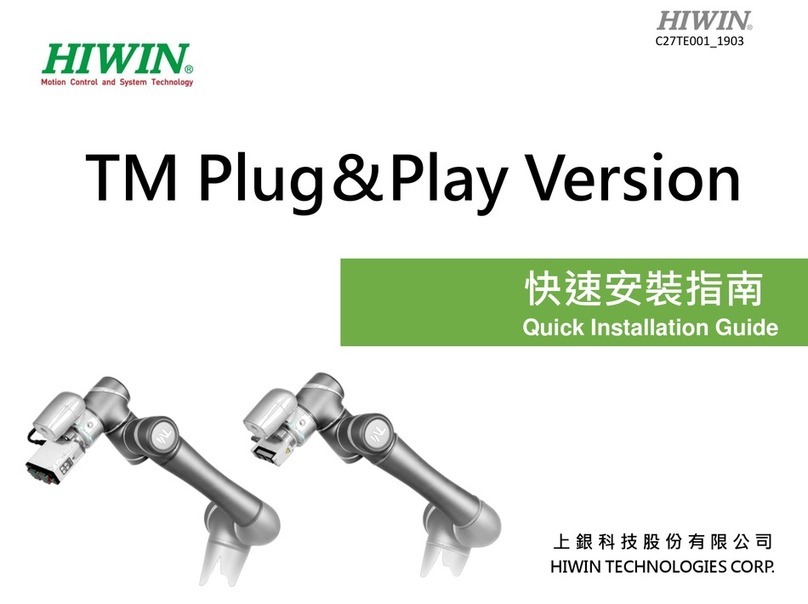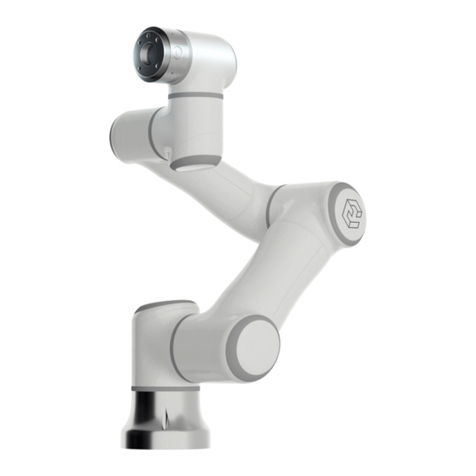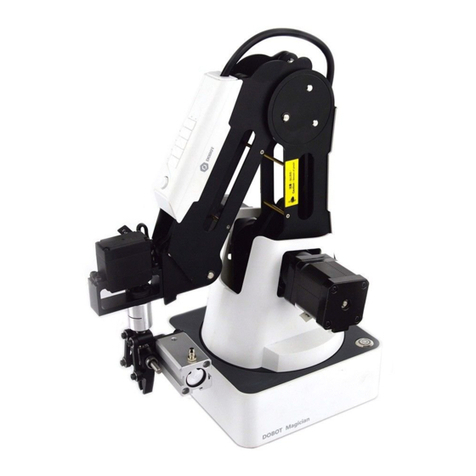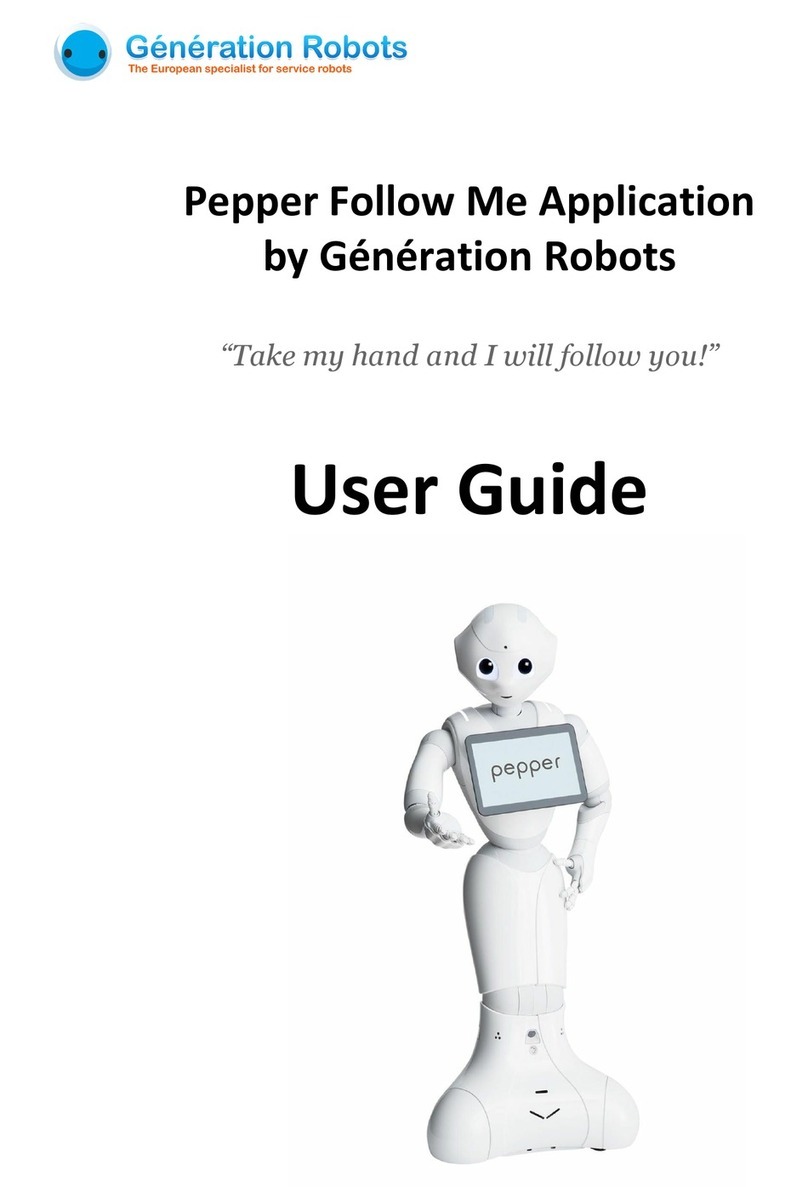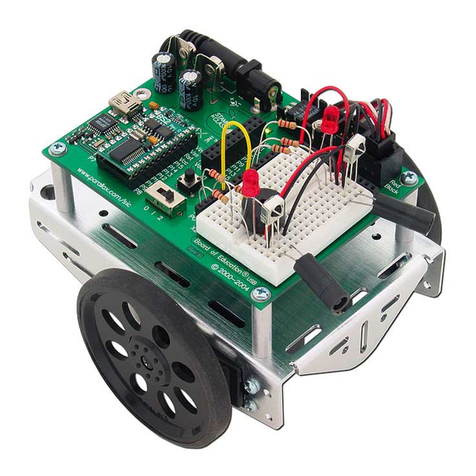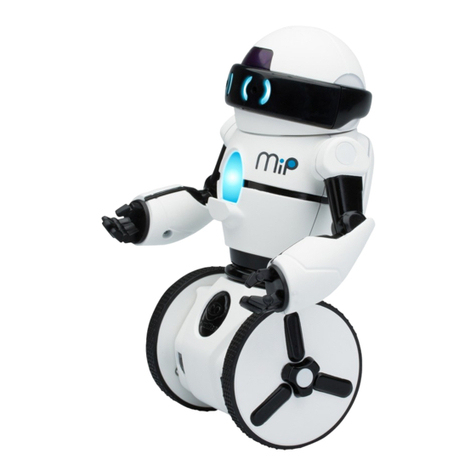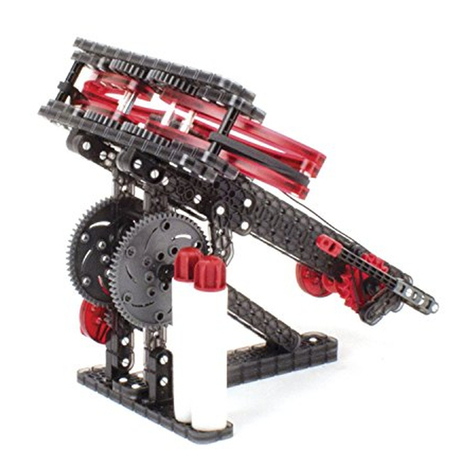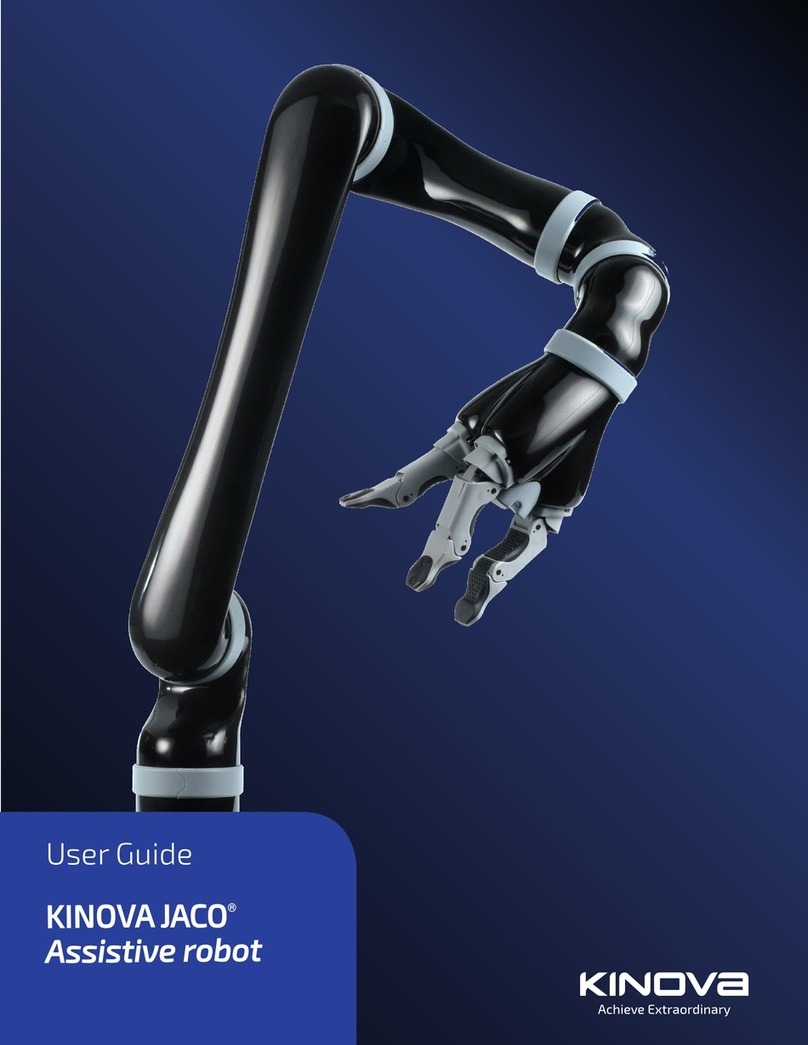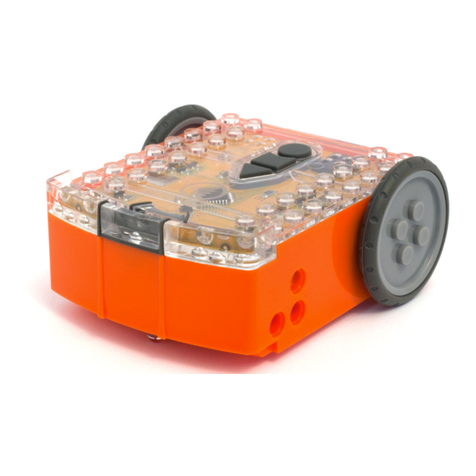neobotix USBoard-USS5-IP User manual

USBoard-USS5-IP
Neobotix GmbH
Apr 21, 2023

User Manual
1 USBoard-USS5-IP 1
1.1 Introduction ............................................... 2
1.1.1 Intended Use .......................................... 2
1.1.2 Improper Use .......................................... 2
1.1.3 Qualified Personnel ....................................... 2
1.2 Technical Data .............................................. 2
1.2.1 USBoard-USS5-IP ....................................... 2
1.2.2 Ultrasonic Sensor Bosch USS5 ................................. 3
1.3 Dimensions ................................................ 3
1.4 Connector Descriptions ......................................... 4
1.4.1 Connectors ........................................... 4
1.4.2 Primary Connector ....................................... 5
1.4.3 Secondary Connector ...................................... 6
1.5 Additional Parts ............................................. 6
1.5.1 USBoard-USS5-IP Connectors ................................. 6
1.5.2 USBoard-USS5-IP Configuration Cable ............................ 6
1.5.3 Primary Cable Set ........................................ 7
1.5.4 Secondary Cable Set ...................................... 7
1.5.5 Sensors ............................................. 7
1.6 Legal Notes ................................................ 7
1.6.1 EU Declaration of Conformity ................................. 7
1.6.2 RoHS Information ....................................... 7
2 USBoard-USS5 9
2.1 Introduction ............................................... 10
2.1.1 Intended Use .......................................... 10
2.1.2 Improper Use .......................................... 10
2.1.3 Qualified Personnel ....................................... 10
2.2 Operating Principle ............................................ 10
2.2.1 Basic Principle ......................................... 10
2.2.2 Cross Echo Mode ........................................ 11
2.3 Technical Data .............................................. 12
2.3.1 USBoard-USS5 ......................................... 12
2.3.2 Ultrasonic Sensor Bosch USS5 ................................. 12
2.3.3 USS5 Field of View ....................................... 13
2.4 Parameter Set ............................................... 15
i

2.5 Command Set .............................................. 17
2.5.1 Command IDs .......................................... 17
2.5.2 CAN Communication ...................................... 17
2.5.3 USB / Serial Interface ...................................... 18
2.6 Commands ................................................ 19
2.6.1 CMD_CONNECT ....................................... 19
2.6.2 CMD_SET_CHANNEL_ACTIVE ............................... 19
2.6.3 CMD_GET_DATA_1TO8 ................................... 20
2.6.4 CMD_GET_DATA_9TO16 ................................... 20
2.6.5 CMD_WRITE_PARASET ................................... 20
2.6.6 CMD_WRITE_PARASET_TO_EEPROM ........................... 21
2.6.7 CMD_READ_PARASET .................................... 21
2.6.8 CMD_GET_ANALOGIN ................................... 22
2.6.9 CMD_GET_DATA ....................................... 22
2.7 ROS Node ................................................ 23
2.7.1 Installation ........................................... 23
2.7.2 Launch ............................................. 24
2.7.3 Parameters ........................................... 24
2.7.4 Topics .............................................. 25
2.7.5 Multiple USBoards ....................................... 25
2.7.6 Help ............................................... 26
2.8 ROS 2 Node ............................................... 26
2.8.1 Installation ........................................... 26
2.8.2 Launch ............................................. 27
2.8.3 Parameters ........................................... 27
2.8.4 Topics .............................................. 28
2.8.5 Help ............................................... 28
2.9 Graphical User Interface ......................................... 28
2.9.1 Introduction ........................................... 28
2.9.2 First Steps ............................................ 29
2.9.3 Configuration .......................................... 31
2.10 Dimensions ................................................ 35
2.11 Connector Descriptions ......................................... 36
2.11.1 X1 ................................................ 36
2.11.2 X2 - X5 ............................................. 36
2.11.3 X6 ................................................ 37
2.11.4 X7 ................................................ 37
2.11.5 USS5 .............................................. 37
2.12 Additional Parts ............................................. 37
2.12.1 Connectors ........................................... 37
2.12.2 USBoard-USS5 Configuration Cable .............................. 37
2.12.3 Sensor Cable Sets ........................................ 38
2.12.4 Connector Sets ......................................... 38
2.12.5 Ultrasonic Sensors ....................................... 38
2.12.6 USS5 Mounting Frames .................................... 41
2.13 FAQ .................................................... 41
2.13.1 General Questions ....................................... 42
2.13.2 Connection Problems ...................................... 42
2.14 Legal Notes ................................................ 42
2.14.1 EU Declaration of Conformity ................................. 43
2.14.2 RoHS Information ....................................... 43
3 Connectors 44
3.1 TE Connectivity - HE14 ......................................... 44
ii

3.2 Würth Elektronik - MPC4 ........................................ 45
3.3 Würth Elektronik - MPC3 ........................................ 46
4 Qualified Personnel 48
5 Legal Notes 49
5.1 Version Information ........................................... 49
5.2 Liability ................................................. 49
5.3 Downloads and Further Information ................................... 49
iii

CHAPTER 1
USBoard-USS5-IP
_
Download as PDF1
The USBoard-USS5-IP is a variant of the USBoard-USS5 (page 9). It was designed for more demanding environmental
conditions and mounting outside of a protective cabinet. Most of the basic functionality and properties of the USBoard-
USS5-IP are identical to the USBoard-USS5. This documentation thus mainly describes the differences between the
two boards.
1https://neobotix-docs.de/hardware/en/USBoard-USS5-IP.pdf
1

CHAPTER 1. USBOARD-USS5-IP 1.1. INTRODUCTION
Tip: The Graphical User Interface is also the same as for the USBoard-USS5 and can be found at Graphical User
Interface (page 28).
1.1 Introduction
1.1.1 Intended Use
The USBoard-USS5-IP was designed for use in mobile robots and similar machines like wheeled drones or AGVs. It
is meant for obstacle detection and collision avoidance.
The USBoard-USS5-IP can also be used in stationary machines or equipment to provide distance measurement data.
The USBoard-USS5-IP was developed to provide exclusively non-safe data and information.
1.1.2 Improper Use
The USBoard-USS5-IP is explicitely not a safety device and must not be used as such. It must never be used to
safeguard dangerous areas or as single system for collision avoidance.
It is not recommended to use the USBoard-USS5-IP in applications with very high requirements on measurement
accuracy, on reliability of the measurements or on data output speed. This for example includes motion control
applications like parking.
1.1.3 Qualified Personnel
The USBoard-USS5-IP must only be installed, connected and brought into service by qualified personnel (page 48).
1.2 Technical Data
1.2.1 USBoard-USS5-IP
• Supply voltage from +9 VDC up to +60 VDC, max. 4 W
• Digital communication via CAN and RS-232
• Solid state relay outputs for warning and alarm distance (max. 60 V, 0,5 A)
• Weight: 270 g
• Storage temperature range: -40 °C – 85 °C
• Operation temperature range: 0 °C – 50 °C
• Protection: IP67
• Customs tariff number: 9031 9000
• Order number: X102
2

CHAPTER 1. USBOARD-USS5-IP 1.3. DIMENSIONS
1.2.2 Ultrasonic Sensor Bosch USS5
The technical data of the Bosch USS5 ultrasonic sensors can be found here (page 12).
1.3 Dimensions
Note: The CAN terminating resistor can be activated in software, either by using the GUI (page 33) or by setting the
corresponding flag in the parameter set (page 15).
The USBoard-USS5-IP can be mounted in any orientation.
3

CHAPTER 1. USBOARD-USS5-IP 1.4. CONNECTOR DESCRIPTIONS
1.4 Connector Descriptions
1.4.1 Connectors
1.4.1.1 Cinch ModICE ME
Pins Cinch Farnell RS Components
30 pins, 3 rows 581 01 30 029 2751266 664-7267
18 pins, 3 rows 581 01 18 023 2751265 664-7254
4

CHAPTER 1. USBOARD-USS5-IP 1.4. CONNECTOR DESCRIPTIONS
Cinch Farnell RS Components
Crimp contacts AWG 20 425 00 00 872 2751652 885-7025
Blind plug 581 00 00 011 2751475 664-7295
1.4.2 Primary Connector
Pin Description
1A Ground (Sensors)
1B Sensor 8
1C Sensor 7
1D Sensor 6
1E Sensor 5
1F CAN High
1G CAN High
1H Warning Relay Output (Normally Open)
1J Alarm Relay Output (Normally Open)
1K Ground (Supply)
2A RS-232 RxD (Receive Line)
2B Ground (Sensors)
2C Ground (Sensors)
2D Ground (Sensors)
2E Ground (Sensors)
2F CAN Low
2G CAN Low
2H Warning Relay Output (Normally Open)
2J Alarm Relay Output (Normally Open)
2K Supply Voltage
3A RS-232 TxD (Transmit Line)
3B Sensor Supply Voltage
3C Sensor Supply Voltage
3D Sensor Supply Voltage
3E Sensor Supply Voltage
3F Ground (Sensors)
3G Sensor 4
3H Sensor 3
Continued on next page
5

CHAPTER 1. USBOARD-USS5-IP 1.5. ADDITIONAL PARTS
Table 1 – continued from previous page
Pin Description
3J Sensor 2
3K Sensor 1
1.4.3 Secondary Connector
Pin Description
1A Sensor 16
1B Sensor 15
1C Not Connected
1D Not Connected
1E Sensor10
1F Sensor9
2A Ground (Sensors)
2B Ground (Sensors)
2C Sensor14
2D Sensor12
2E Ground (Sensors)
2F Ground (Sensors)
3A Sensor Supply Voltage
3B Sensor Supply Voltage
3C Sensor 13
3D Sensor 11
3E Sensor Supply Voltage
3F Sensor Supply Voltage
1.5 Additional Parts
1.5.1 USBoard-USS5-IP Connectors
Note: An overview of the connectors for the USBoard-USS5-IP can be found at Connector Descriptions (page 4).
A complete connector set for the USBoard-USS5-IP can be ordered from Neobotix under order number X222 for
customers who want to manufacture the cable set themselves.
1.5.2 USBoard-USS5-IP Configuration Cable
Neobotix offers a standard cable set (X221) for first tests of the USBoard-USS5-IP. This cable set features cables of 1
m length for up to four sensors. All other cables are also 1 m long.
The connection layout is as follows:
6

CHAPTER 1. USBOARD-USS5-IP 1.6. LEGAL NOTES
Connection Pin Description
1 x Red + Power
1 x Black - Ground
2 x Brown Warning Relay
2 x Yellow Alarm Relay
D-Sub 9 “RS-232” 2 Transmit Line (TxD)
3 Receive Line (RxD)
5 Ground
D-Sub 9 “CAN1”/”CAN2” 2 CAN Low
3 CAN High
7 CAN Ground
1.5.3 Primary Cable Set
We also offer a complete cable set for the 30 pin primary connector with order number X223. The basic cables are
identical to the configuration cable. The only difference is that the primary cable set features eight sensor cables of 2
m each. Other cable lengths (up to 25 m) and designs are available on request.
1.5.4 Secondary Cable Set
Customers who want to use more than eight sensors can order our secondary cable set (X224). This provides another
eight sensor cables of 2 m length. Other cable lengths (up to 25 m) and designs are available on request.
1.5.5 Sensors
The USBoard-USS5-IP uses the same sensors as the USBoard-USS5. You can find more information and the part
numbers in its documentation at Ultrasonic Sensors (page 38).
1.6 Legal Notes
The general legal notes can be found at Legal Notes (page 49).
1.6.1 EU Declaration of Conformity
This product fulfils all relevant directives of the European Union.
1.6.2 RoHS Information
7

CHAPTER 1. USBOARD-USS5-IP 1.6. LEGAL NOTES
This product complies to the RoHS directives 2011/65/EU (RoHS 2) and 2015/863/EU of the European Parliament
and the Council on the restriction of the use of hazardous substances in electrical and electronic equipment.
8

CHAPTER 2
USBoard-USS5
_
Download as PDF2
Ultrasonic sensors are used to measure the distance to objects within the sensor’s metering range. The metering
principle is based on measuring the time of flight of a sound pulse. This pulse is created by the sensor, reflected by an
obstacle and then received by the sensor.
The USBoard-USS5 is capable of operating up to 16 ultrasonic sensors of type Bosch USS5. It can be used for
collision detection on autonomous vehicles like mobile robot, wheeled drones and other AGVs. The board features
easy commissioning, comfortable parametrization and a wide range of custom settings. Defining warning and alarm
distances allows an easy detection of possible collisions.
Furthermore four analogue inputs are available on the board. These inputs can be used to add other sensors to the
system without the need for any additional boards.
2https://neobotix-docs.de/hardware/en/USBoard-USS5.pdf
9

CHAPTER 2. USBOARD-USS5 2.1. INTRODUCTION
Tip: The Graphical User Interface for the USBoard-USS5 can be found at Graphical User Interface (page 28).
2.1 Introduction
See also our FAQ (page 41).
2.1.1 Intended Use
The USBoard-USS5 was designed for use in mobile robots and similar machines like wheeled drones or AGVs. It is
meant for obstacle detection and collision avoidance.
The USBoard-USS5 can also be used in stationary machines or equipment to provide distance measurement data.
The USBoard-USS5 was developed to provide exclusively non-safe data and information.
2.1.2 Improper Use
The USBoard-USS5 is explicitely not a safety device and must not be used as such. It must never be used to safeguard
dangerous areas or as single system for collision avoidance.
It is not recommended to use the USBoard-USS5 in applications with very high requirements on measurement accu-
racy, on reliability of the measurements or on data output speed. This for example includes motion control applications
like parking.
2.1.3 Qualified Personnel
The USBoard-USS5 must only be installed, connected and brought into service by qualified personnel (page 48).
2.2 Operating Principle
2.2.1 Basic Principle
An ultrasonic sensor creates a sound pulse that is reflected by obstacles and then returns to the sensor. By measuring
the time between emitting and receiving the ultrasonic pulse, the USBoard-USS5 is able to calculate the distance
between the sensor and the closest obstacle.
In default mode the sensors are operated cyclically one after. In cross echo mode (page 11) the sensors operate in
groups of four. Only one of these sensors emits the pulse but all sensors can receive the echo. If the geometric
positions of the sensors are know it is possible to triangulate the position of the detected obstacle.
A CAN and a USB communication interface can be used to acquire distance data measured by the sensors as well as
the data from the analogue inputs. On request the USB port can be replaced by a RS-232 interface.
For each sensor a warning and an alarm distance can be defined by software. This allows using the board for collision
protection. As soon as the distance measured by a sensor falls below the according warning distance, an LED on the
board lights up and a relay is switched. A second LED and another relay indicate that an obstacle was detected within
the alarm distance of one or more sensors. Warning and alarm distances are defined in the parameter set via the GUI.
10

CHAPTER 2. USBOARD-USS5 2.2. OPERATING PRINCIPLE
Warning: The USBoard-USS5 is no safety system and can only provide supporting, non-safe information. Never
use the USBoard-USS5 for safeguarding of dangerous areas or movements.
2.2.2 Cross Echo Mode
In the traditional, sequential operation mode the sensors are independent from each other. They operate in an infinite
loop one after the other, with each sensor sending its own ultrasonic pulse and waiting for the echo to calculate the
distance to the object (left picture below). If a sensor receives an echo from a pulse that was sent earlier by another
sensor it will be treated like a regular echo, resulting in a faulty measurement (right picture).
In cross-echo mode only one sensor of the group of four will send a pulse but all four sensors can receive the echo. If
the positions of all sensors are known it is possible to estimate the location of the detected object based on the different
durations it takes the echo to reach each sensor.
Several aspects should be kept in mind when calculating the object’s position.
• Depending on the shape and surface of an object the ultrasound pulse is reflected or absorbed differently. This is
why some objects may be detectable with direct measurements in normal mode but do not create a sufficiently
strong cross-echo.
• The realistic field of view of the sensors is rather limited at large distances and also dependent on form and
material of the object. It is thus recommended to do some experiments and tests in cross-echo mode before
setting up the actual application.
• The distance calulation performed by the USBoard-USS5 is the same in both operating modes: The time be-
tween sending and receiving the echo is halved and multiplied with the speed of sound. This reduces processing
11

CHAPTER 2. USBOARD-USS5 2.3. TECHNICAL DATA
and cycle times and makes the data output easier. If the distance between the sensors of a cross-echo group is
not too big this simplified calculation often provides usable results, despite being not perfectly accurate. For an
exact triangulation please double the measurement output to get the total distance from the sending sensor to the
obstacle and back to each sensor.
2.3 Technical Data
2.3.1 USBoard-USS5
• Supply voltage from +9 VDC up to +60 VDC, max. 4 W
• Digital communication via CAN and USB, optional RS-232
• Optical indicators for warning and alarm distance
• Solid state relay outputs for warning and alarm distance (max. 60 V, 0,5 A)
• Four analogue inputs (0 V – 5 V)
• Weight: 71 g
• Storage temperature range: -40 °C – 85 °C
• Operation temperature range: 0 °C – 70 °C
• Customs tariff number: 9031 9000
• Order number: X101
2.3.2 Ultrasonic Sensor Bosch USS5
• Theoretical field of view: 120° x 60°, symmetrical
• Realistic field of view at maximum distance: 10° x 10°, symmetrical
• Please check our FOV test results below (page 13).
• Operating frequency: 48 kHz
• Range: 0.2 m up to 3.3 m
12

CHAPTER 2. USBOARD-USS5 2.3. TECHNICAL DATA
• Detection of objects closer than the minimum distance
• Indication of empty measurement range (no echo)
• Customs tariff number: 9031 8080
• Order number: X210
2.3.3 USS5 Field of View
We have tested the USS5 real world field of view with different objects and configurations. So far we did tests with
• a plastic tube (diameter 75 mm, height 1.75 m)
• a wooden bar (width 0.1 m, height 1.77 m)
• a cardboard rectangle (width 0.6 m, height 0.4 m)
• a human (height 1.8 m)
You can download our full data set here.
Note: Please note that the data on this page are only for reference and are no assurance of any product features.
Please perform your own tests to check the suitability of the USBoard-USS5 and the USS5 sensors for your specific
application.
13

CHAPTER 2. USBOARD-USS5 2.3. TECHNICAL DATA
14

CHAPTER 2. USBOARD-USS5 2.4. PARAMETER SET
2.4 Parameter Set
The USBoard-USS5 uses a parameter set which allows a custom configuration. The graphical user interface can
be used to easily manipulate the board’s settings, store them on the host computer’s hard drive, write them to the
EEPROM on the USBoard-USS5 or read the current values from the board.
The parameter set consists of 54 bytes as described below.
Note: Several features affect groups of sensors. In these cases group 0 contains sensors 1 to 4, group 1 contains
sensors 5 to 8 and so on.
Byte 0 CAN baud rate
0 1000 kBaud (default)
1 500 kBaud
2 250 kBaud
3 125 kBaud
4 100 kBaud
5 50 kBaud
Bytes 1-4 CAN base address (default 0x400), calculated as follows:
(byte_4 << 24) | (byte_3 << 16) | (byte_2 << 8) | byte_1
Byte 5 Flags as bitmask
15

CHAPTER 2. USBOARD-USS5 2.4. PARAMETER SET
Bit Meaning
0 Enable CAN extended id (default 0)
1 Enable CAN termination of USBoard-USS5-IP (default 0)
2 Enable analog input (default 0)
3 Enable legacy data format (default 0)
4 Warning relay blocked mode (default 0) (see Configuration (page 31))
5 Alarm relay blocked mode (default 0) (see Configuration (page 31))
In legacy mode, the data format is the same as the previous version of the USBoard, compatible to Relay-
BoardV2. This only affects continous transmission mode.
Byte 6 Bits 0 to 3 encode the transmission mode for measurement data.
0 Send on request
1 Send continously via CAN
2 Send continously via USB / RS-232
3 Send continously via CAN and USB / RS-232
Bits 4 to 7 select which group will send measured data (bit 4 for group 0, bit 5 for group 1 and so on). If all bits
are set to 0, all groups will send.
Default is 0xF0, i.e. all groups transmit on request.
Byte 7 Bits 0 to 3 encode the transmission interval when sending continously.
0 0.5 s
1 1.0 s
2 2.0 s
3 0.2 s
15 custom
Bits 4 to 7 encode a custom transmission interval in 50 ms increments (0 for 50 ms, 1 for 100 ms and so on).
Byte 8 Sensors 1 to 8 active, bit coded. Default is 0xFF, i.e. all active.
Deactivated sensors do not send ultrasonic pulses. Deactivating sensor channels that are not in use reduces the
overall cycle time.
Byte 9 Sensors 9 to 16 active, bit coded. Default is 0xFF, i.e. all active.
Deactivated sensors do not send ultrasonic pulses. Deactivating sensor channels that are not in use reduces the
overall cycle time.
Bytes 10-25 Warning distances of sensors 1-16, in cm. Default is 100 cm.
Bytes 26-41 Alarm distances of sensors 1-16, in cm. Default is 30 cm.
Byte 42 Sensor resolution, 2 bits per group
0 1 cm
1 0.5 cm (default)
2 0.25 cm
3 0.125 cm
Byte 43 Enable cross echo mode, one bit per group. Default is 0.
16
Table of contents
Other neobotix Robotics manuals
Popular Robotics manuals by other brands
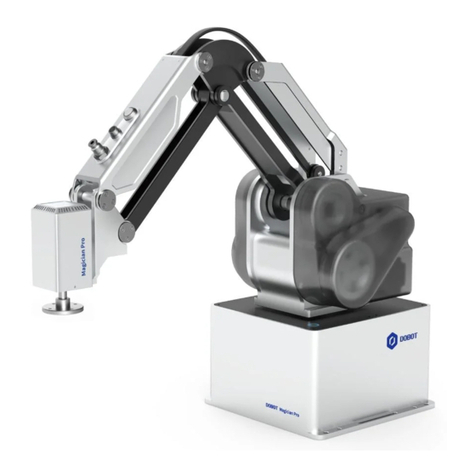
Dobot
Dobot MG400 Hardware user's guide
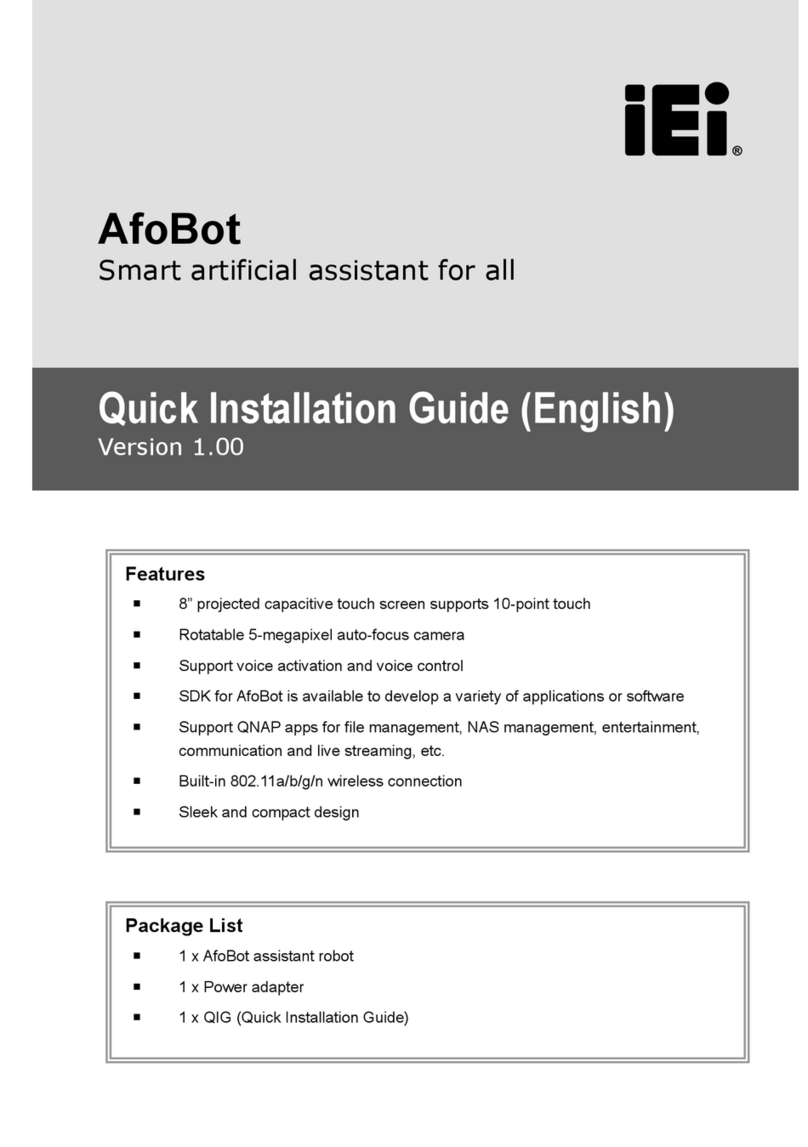
IEI Technology
IEI Technology AfoBot installation guide
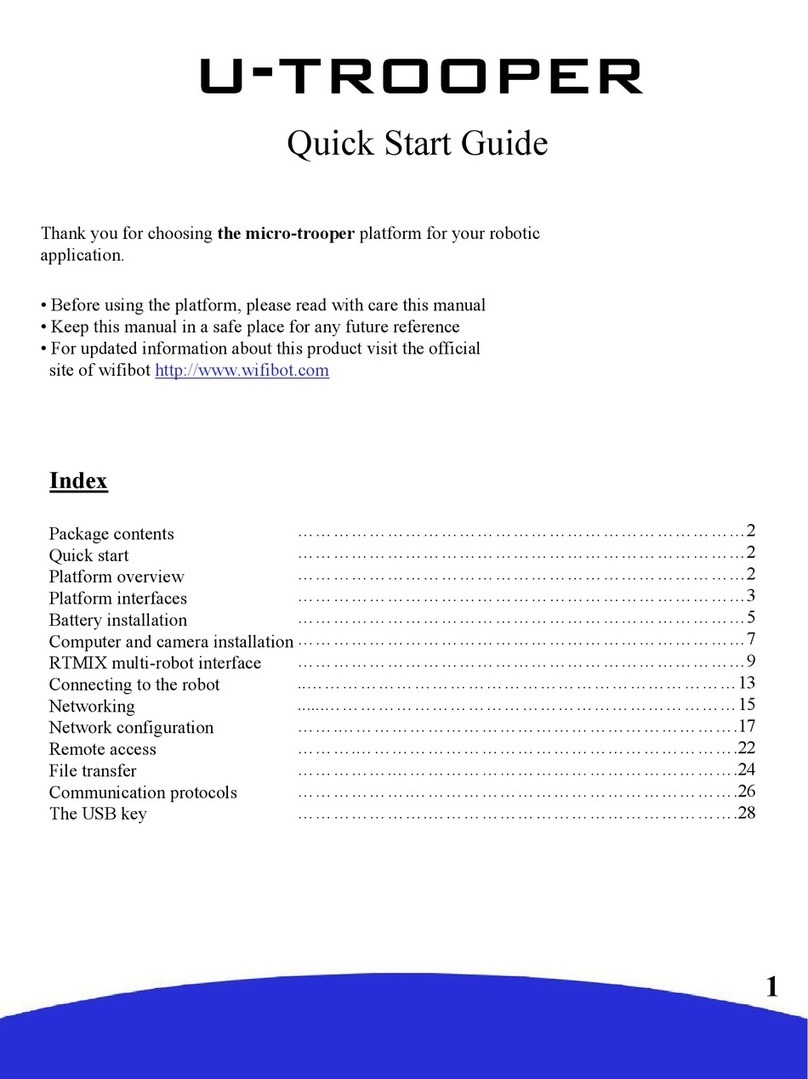
Wifibot
Wifibot U-TROOPER quick start guide

BLUEPRINTLAB
BLUEPRINTLAB REACH ALPHA RS1-1100 Integration manual
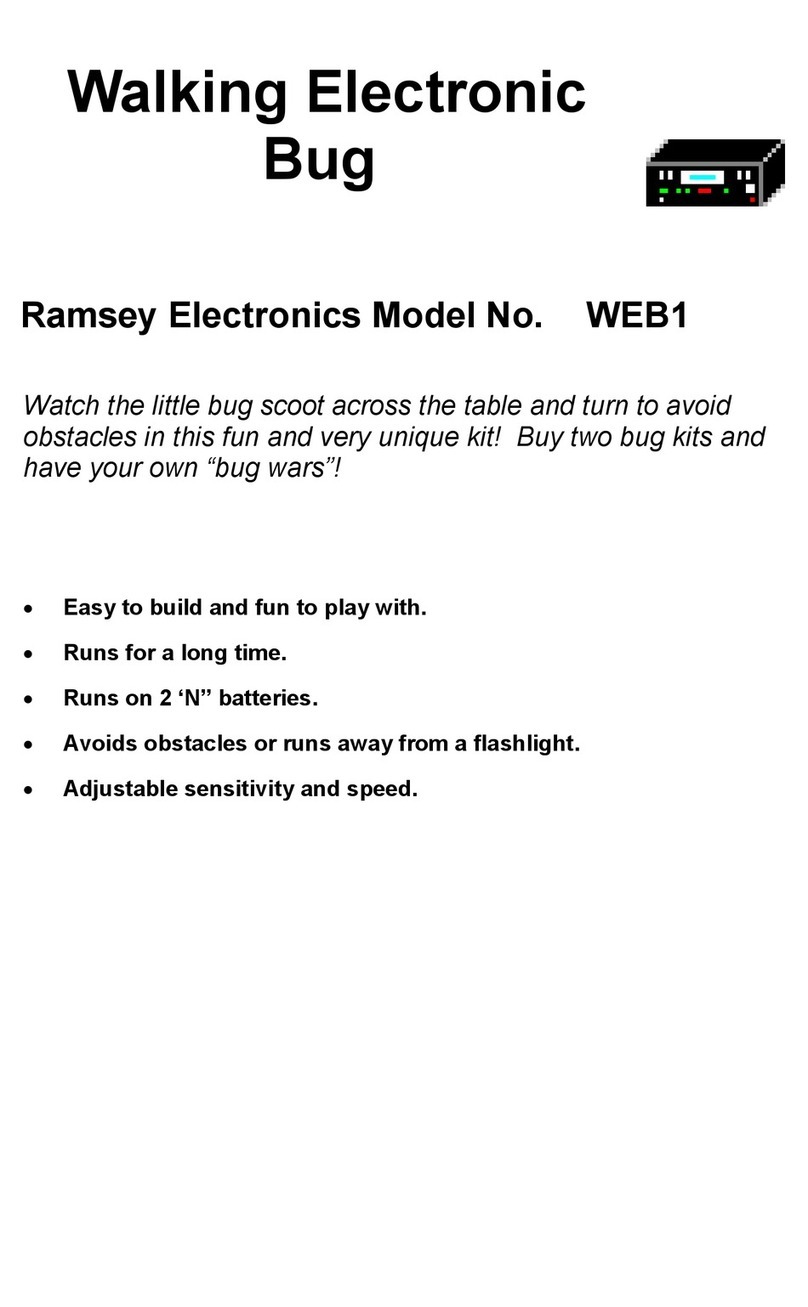
Ramsey Electronics
Ramsey Electronics Walking Electronic Bug WEB1 Assembly and instruction manual
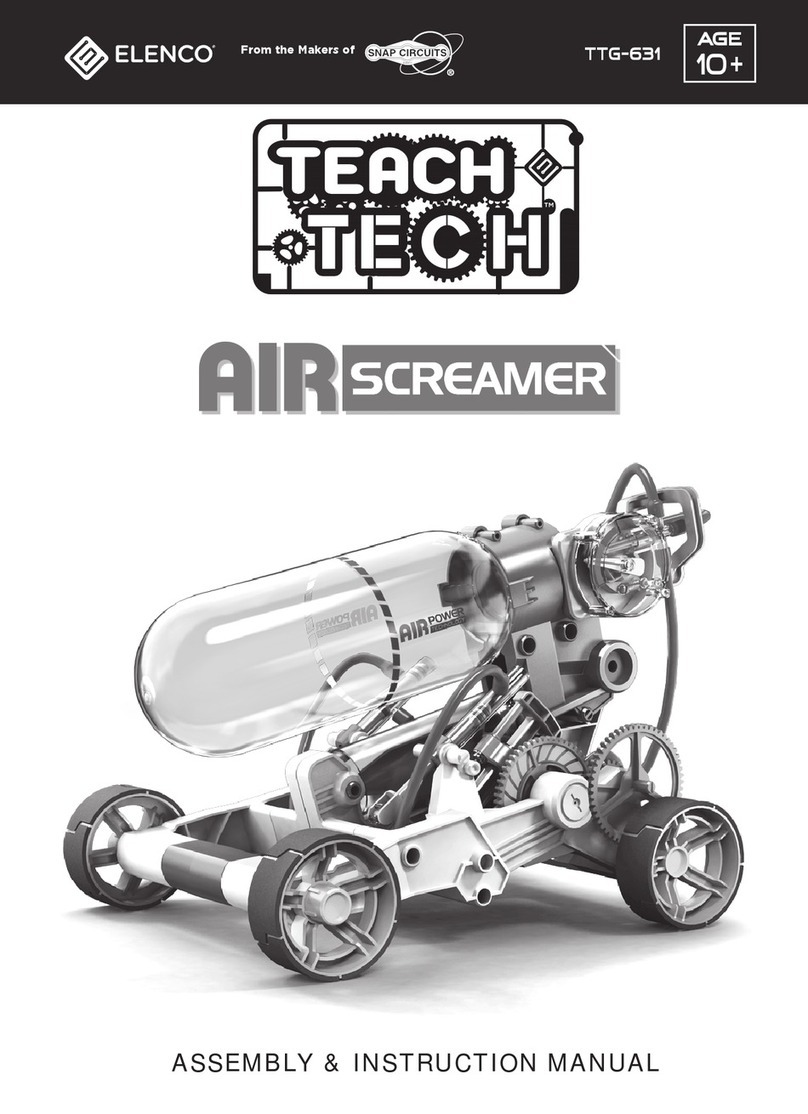
TEACH TECH
TEACH TECH TTG-631 Assembly & instruction manual
